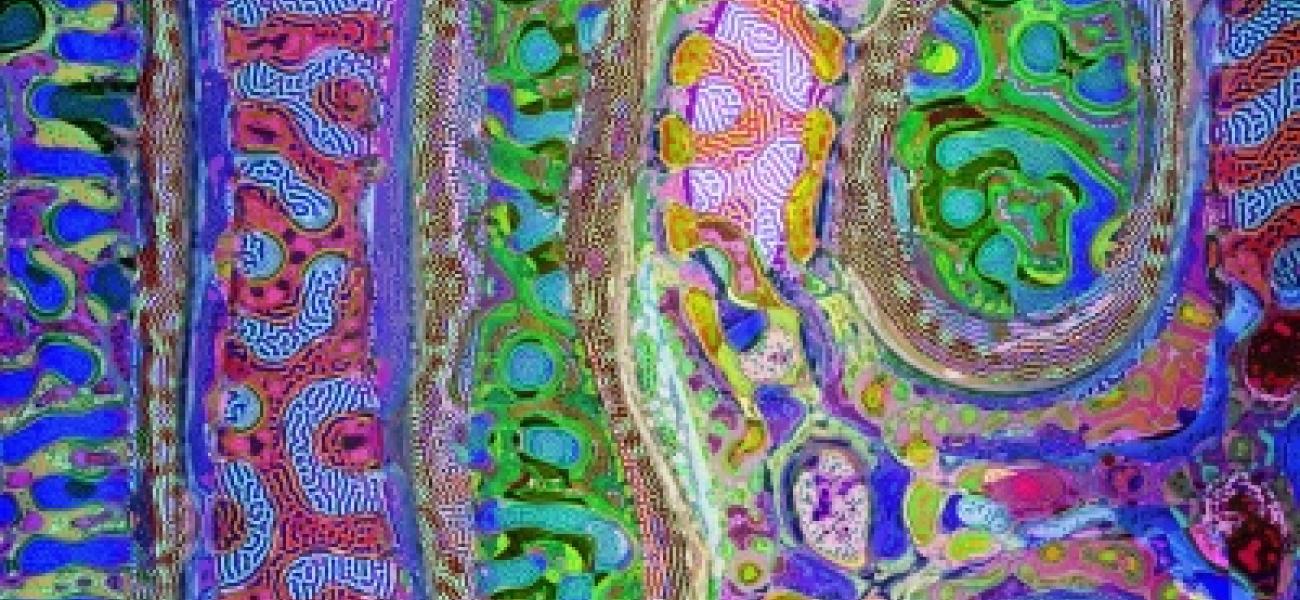Hypnotic Art Shows How Patterns Emerge From Randomness in Nature

Featured on wired.com
British mathematician Alan Turing is perhaps best known for the Turing test, which determines if a computer can be considered intelligent based on whether it can pass for a human in conversation. But in 1952, he also proposed an explanation for how naturally occurring patterns — things like the spots and stripes on animal fur — could arise from a random slate of cells. At the time, scientists were struggling to understand how large-scale organization and patterns emerged during development.
According to Turing’s theory, designs like fur patterns result from the interactions between individual cells; in other words, the state of a cell influences that of its neighbors, and they, in turn, influence their neighbors. You can see the results of this process in the images collected here; they’re a kind of digital representation of Turing’s idea, except using pixels instead of cells. It’s the relationship among these cells and pixels that ultimately produces a pattern from randomness — a relationship that relies on interacting, molecular signals that spread among groups of otherwise identical cells.
Turing called this the reaction-diffusion process, meaning that it’s driven by reactive molecules that can diffuse between cells. He called these molecules “morphogens” because they affect the morphology, or physical character, of a cell. One molecule activates a change, like color, and one inhibits it. Patterns are produced by varying concentrations of the morphogens as they interact and spread through a population of cells.
Recently, a team of scientists based at Brandeis University reproduced the system Turing envisioned in 1952 while describing his theory of morphology: a circular arrangement of identical cells, each containing the same two interacting chemicals, separated by a flexible membrane that lets those chemicals move between cells. These two chemicals oscillate between different colors depending on the ratios of various chemical ions. More of one, and the cell is smaller and lighter; more of the other, and the cell is bigger and darker. If Turing’s theory was right, then the population of cells would ultimately assume one of six different patterns. Which pattern depends on how various factors, such as the starting amount of the chemicals and how easily they can spread, are tweaked.
In fact, this is mostly what the team found — they saw five of the six predicted patterns; but they also found a seventh pattern that Turing had not predicted. “We experimentally establish Turing’s prediction that interacting identical cells differentiate into chemically distinct populations,” the team wrote in March in the Proceedings of the National Academy of Sciences, “which subsequently transform physically in size, thereby demonstrating that these synthetic cells are pluripotent and that abiotic materials can undergo morphogenesis via the Turing mechanism.”
Now, generative artist and designer Jonathan McCabe, based in Canberra, Australia, is turning Turing’s theory into art. Instead of cells, McCabe starts with pixels. Each pixel gets a random value, usually a number between -1 and 1, which is represented in the final image by a color. Then, McCabe applies a set of rules that dictate how each pixel’s value shifts in response to the ones around it. As the program progresses, pixel values change, creating clusters of shapes that begin to emerge from the originally random mix of numbers. In the end, McCabe’s digital canvases sometimes take on a startlingly biological appearance, resembling everything from mitochondria, to spots and stripes, to a cross section of leaf tissue you might study under a microscope.
We found McCabe’s colorful, intricate creations to be well worth staring at. If the images above leave you wishing you could see how the patterns arise from randomness, we’re embedding a video below of a totally trippy, inflating Turing pattern as it slowly mutates.